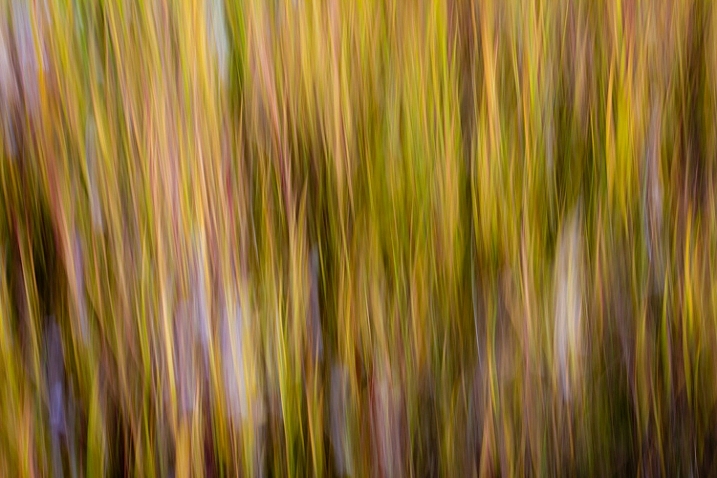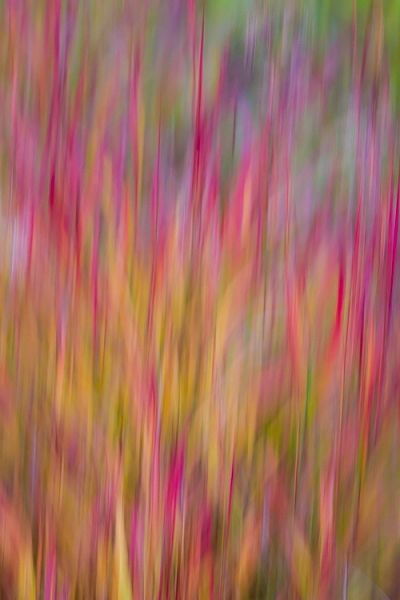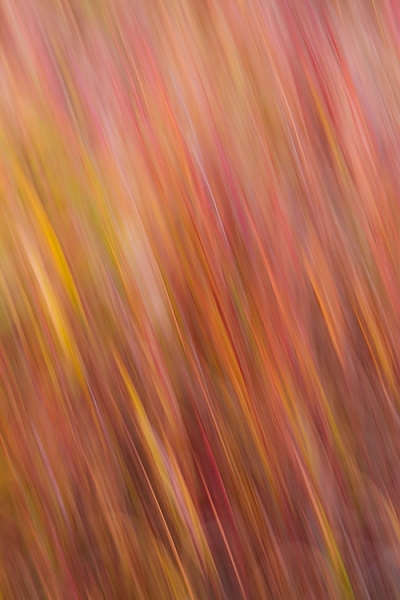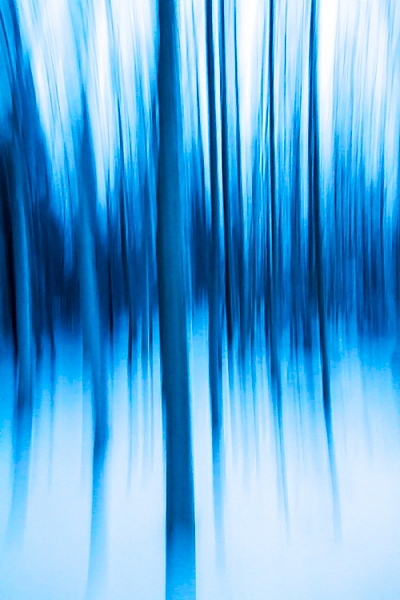The post Using Creative Zoo Photography for Awesome Animal Photos appeared first on Digital Photography School. It was authored by Rick Ohnsman.

Wildlife photographers are a dedicated bunch. They spend money to travel to exotic places, brave miserable conditions, deal with whatever light conditions are present at the time and then sometimes don’t even see the animals they came to photograph. Pandas in China, tigers in India, lions on the Serengeti, polar bears in the frozen Yukon or maybe gorillas in the Congo. You could spend a lifetime photographing wild animals in their native lands.

Bengal Bath – Photographed in the wilds of India or in a zoo? You tell me.
Or, you could take a cue from Simon and Garfunkel –
“Someone told me it’s all happening at the Zoo”
– “At the Zoo” – Paul Simon and Art Garfunkel
I’ll grant you, photographing a lion in the zoo doesn’t have the same thrill as being on safari. If you have the time and the money to do such things, by all means, go for it. For many of us though, the zoo offers a chance to photograph animals we’d never see otherwise and, using the tips we’re about to cover, you can still make some very nice images. You don’t have to tell your friends where you took them, right?

It’s hard to make a zoo photo look like it was taken in the wild with a chainlink fence in the background. Go with a wide aperture to throw the background out of focus if you can.
Challenges
In the bush, the challenges of photographing wildlife are likely finding the animal you’re seeking and, depending on the species, perhaps trying not to get eaten. At the zoo, there are cages, glass or at least barriers designed to separate you and the creatures. Safer, yes, but also a little frustrating when you’re trying to make a nice photo.
Let’s look at some workarounds for zoo photography.

Sometimes this is what you encounter when trying to do zoo photography. When the animal is right up against the wire, there’s not much you can do.

Get a little separation between the animal and the cage, get close to the wire, use a large aperture, and you can do this. This could probably be cleaned up further with the cloning tool in post-production.
Cages
Zoos are getting better at designing structures so that the animals aren’t always behind bars or chainlink fences, but sometimes you will still have to deal with this. If the animal is up close to the fence, you might have no choice but to include it in the shot.
But, if you can wait until the beast moves further away from the barrier, this trick can work. Get close to the fence if you can, then use a wide aperture. Zoom into and focus on the animal. You may find that the limited depth of field pretty much renders the fence as a blur, barely showing up at all. Often you can clean up what remains of the fence or bars when editing.

Having to work through the glass, the top image is straight out of the camera. But, with some editing, a pretty nice Panda Portrait results.

An aquarium is a zoo of sorts where all the animals will be behind glass. Note how I rescued the turtle image with editing and monochrome conversion.
Glass
Sometimes the barrier between you and the animal will be glass. You’ll have to deal with grime, scratches, and reflections. Carry a cloth in your bag when you go to the zoo and clean a spot on the glass where you’ll be shooting. Get as close to the glass as you can, again with a wide aperture to help blur any scratches. If reflections are a problem, consider throwing a jacket or cloth over your head or perhaps just the camera to help eliminate them. Later in editing, the dehaze tool can be your friend with photos made through glass.
Distance
Many times I’m glad there’s some distance between the animal I’m photographing and I. (The Komodo dragon was a scary guy for sure!). The difficulty becomes making the animal in your photo more than just a speck in the shot.
You’ll have even more difficulty with this if you’re visiting a wild animal park where instead of the animals being in smaller cages or enclosures, they roam a wide area, and you drive through the park on a tour bus. There’s only one solution here – longer telephoto lenses.
More about lenses in a bit, just know that to get those nice portrait shots, you’re often going to need some bigger glass.

Frame tightly as you would with a human portrait, be sure the eyes are in focus and you’ll capture a more engaging image.
Backgrounds
Though you’ll be photographing animals at the zoo, you’d prefer to have your images look like they were taken in the wild. Your story about photographing zebra on the Serengeti plains will fall apart if there’s an obvious chainlink fence in the background. So, a couple of possible options here:
- Fill the frame with the animal, including as little of the background as possible in the shot.
- Zoom in and use a wide aperture so the background blurs.
- Consider your vantage point when composing your shot. Could you move a little to put natural vegetation, rocks, or something not manmade in the background to better simulate the animals’ natural habitat?

Watch, wait and be ready, and you can capture animals behaving as they do in the wild.
Capturing behavior
A photo of a lion just standing there might be okay, but a shot of a lion roaring…that’s the one you’d like. Images that capture animal behavior are the prize winners. The difference is waiting for the moment. Waiting, waiting, and perhaps waiting some more.
Perhaps you’re not up to being another Dian Fossey living with the mountain gorillas so you can get that unique photo.
Or there’s Guido Sterkendries, who spends weeks in the stifling heat of the Brazilian rainforest on a perch in the treetops to photograph poison dart frogs.
But, rather than just taking the minute or so the average zoo visitor views each exhibit, you might have to wait, watch, and be ready when the animal does something interesting. Also, watch for animal interactions and make photos that tell a story.

Mamas and babies can make good photos. Look for animal interactions that tell a story.
Set up, be ready, and perhaps have continuous mode and servo-focus activated. Then, when it happens and the subject does that intriguing behavior, fire off a burst of shots to guarantee you’ve got that one really great shot.
After all, would you rather go home with a boring photo of every animal in the zoo or just one superb shot of one animal engaging in some really interesting behavior?
When to go
Sometimes you get to a particular animal exhibit at the zoo and the animal is nowhere to be seen. Or maybe he’s over in the corner, zonked out and sleeping – hardly a great photo subject.
Often the trick is to go early in the morning or late in the afternoon when it’s cooler, and the animals are apt to be more active.
Photographers are also quite familiar with the “golden hour.” Not only will the light be better during these times, but the animal’s up, about, and ready for their closeup. Feeding time can also provide some action.
If you can, talk with the zookeepers to find out the best time to come, especially if you have your sights set on shots of particular animals. They will be a great source of information.
Including people
Sometimes the action at the zoo can be on the other side of the cages, the antics of people reacting to or aping for the animals. Keep an eye out for these kinds of behaviors too. Sometimes people are the funniest animals.
Equipment
If you’re going to spend a day at the zoo, you may not want to bring your whole photo kit. Firstly, it’s not much fun schlepping it around. Secondly, while you’re intent on making a shot, an unscrupulous bandit could help themselves to some of your gear. Thirdly, you really don’t need that much for zoo photography.
Here are some things you might want:
Camera
Something with the ability to go manual if necessary and, of course, shooting Raw is almost always better.

A Canon 100-400 zoom was a great lens to have to allow these bird portraits. Wildlife photographers use long lenses and at the zoo, they can help too.
Lenses
You might very well be able to get by with a good wide-range telephoto for zoo photography. Something like a 70-200mm, or if you have something longer like a 70-300 or 100-400, better still.
You’re not apt to need a wide-angle lens at all.
The only other possibility is for zoos that have a butterfly exhibit where a macro could be useful. One or two lenses should have you covered.

Sometimes zoos will have a butterfly exhibit. If where you’re going has one, take a macro lens.
Tripod
You may find that some zoos prohibit tripods, so it would be a good idea to check before you go. A monopod can be a good substitute.
Flash
Probably not. Again, some zoos will prohibit them, they spook the animals, and you’re not apt to want a “flash look” anyway.
Polarizing filter
This can be a good idea. The fur of many animals is shiny and a polarizer can help tame that, also giving you richer colors.
Cloth
Cloth is great for cleaning the glass on animal enclosures that use that.
Settings
You will encounter a variety of lighting situations at the zoo, from dark animals lying in the shade to light animals in the sun, to the dreaded speckled light situation.
Some animals may barely move while others may leap wildly about.
There’s no substitute for knowing your camera and how to deal with varied conditions. Often going fully manual, both for exposure and focus will be your best option.
Fences or glass in the foreground can too easily fool the autofocus, so be careful there.

Some zoos will have a walk-in aviary. If so, it’s a great opportunity for bird photography. Again, have a long lens and if you’ll be handholding the camera, keep the shutter speed high.
In general, a wide aperture to blur the background, coupled with a fast shutter speed to freeze any animal movement, is good. You may also be dealing with a long focal length, and having to handhold is a recipe for camera shake/blur.
Try to keep the shutter speed as fast as possible. Also, keep the ISO low to minimize noise. In varied lighting conditions, you may also want to consider Auto ISO if you understand how it works with your particular camera.
Continuous mode can be a good option so that when an animal does something interesting, you can fire a burst of shots, helping guarantee you capture the moment.
Composition
If there’s any mistake I see beginners making, it’s not filling the frame with their subject. Of course, not every shot needs to be a tightly cropped “portrait,” but the problem comes in when the subject in the image is so small it’s barely identifiable. Alternatively, the shot is so cluttered with other things that one questions what the real subject is. This is where a long lens can help with zoo photography.
Real wildlife photographers must sneak up on their subjects in places where enclosures don’t restrict the animals. So, often they will use – really – long, (and really expensive), glass. You need not go to that extreme, but you do want to make the animal in your shot the star, so frame accordingly.

The eyes have it. You can have parts of the animal out of focus if you must, but the eyes need to be sharp.
As when making portraits of people, when photographing animals, keep the eyes in sharp focus. Having other parts of the animal out of focus or a very limited depth-of-field is forgivable, but if the eyes are not in focus, the shot is probably a candidate for the delete button.
Use manual focus or learn you use your focus points to force focus on the animal’s eyes. Simply using the default center-focus point will likely fail you almost every time. Be the master of your camera’s focus.
This is a tricky one because enclosures, cages, and places where the animal will be won’t always allow this, but where possible, try to get on the same level as the animal. Looking down on the subject just won’t be as impressive. Perhaps you’ll have to put your camera on the ground or use something like a Gorillapod, (appropriate for the zoo, yes?) but do what’s needed to improve your shot.

This could have been even better if I could have got down at the same level as the beast. Then again…
Editing
As with any photo editing, you want to use the tools and tricks in your editing program to improve your shot. Always consider whether a crop may help eliminate distractions or better highlight the animal. Use the exposure, highlights, shadows, whites, and blacks sliders (if editing with Lightroom), to bring out the color and detail of the animal.
The Dehaze option may help, especially where you made a photo through a glass enclosure.
The new Texture slider can also work wonders, bringing out details in an animal’s fur.

Monochrome can give a classy look and in the case of this cheetah, emphasize his spotted camouflage in his environment.
Don’t forget to take a look at going monochrome with some of your images. Sometimes a black and white version of an animal image can be especially striking.
Go zoo it!
So grab your gear and get down to your nearest zoo. You’ll have a great time, get some nice images, and if the song is right, “the animals will love it if you do.”
Do you have any other zoo photography tips? Share with us in the comments! Also, share with us your zoo photography photos.
The post Using Creative Zoo Photography for Awesome Animal Photos appeared first on Digital Photography School. It was authored by Rick Ohnsman.



































 Camera+ for IOS
Camera+ for IOS
 ProShot – for IOS and Android
ProShot – for IOS and Android
 Wordswag – for IOS and Android
Wordswag – for IOS and Android
 Hipstamatic – for IOS
Hipstamatic – for IOS








































You must be logged in to post a comment.